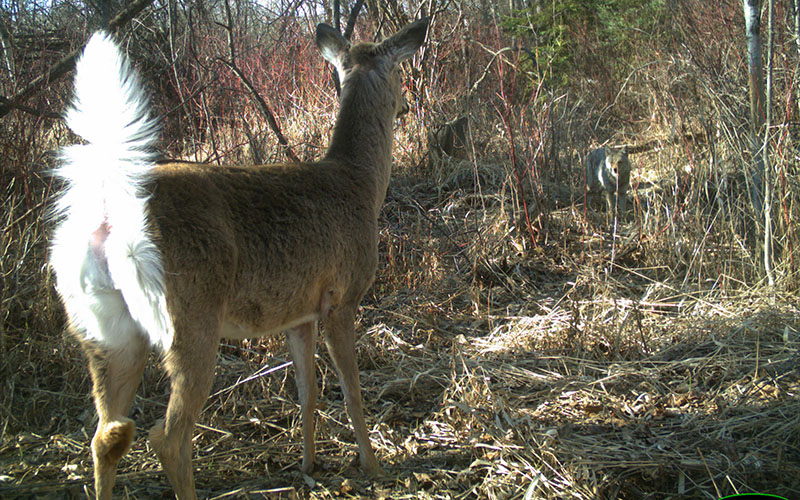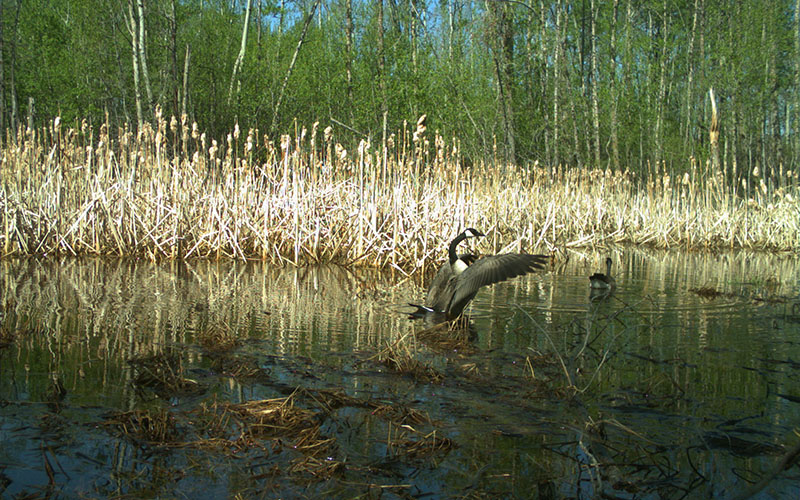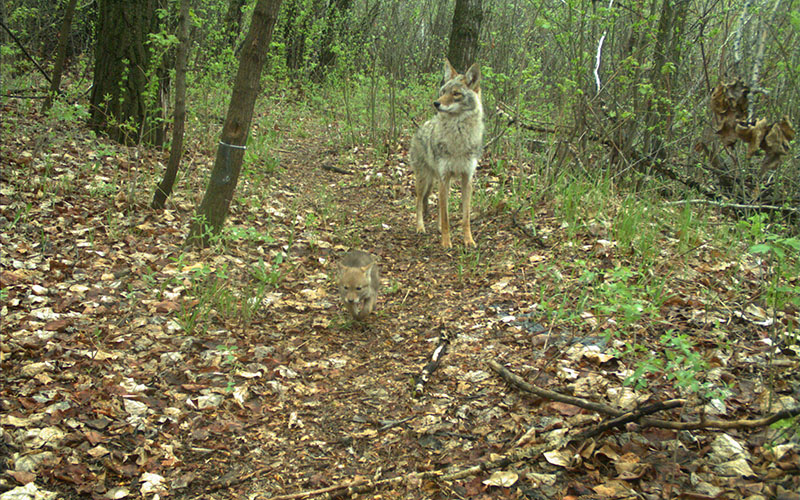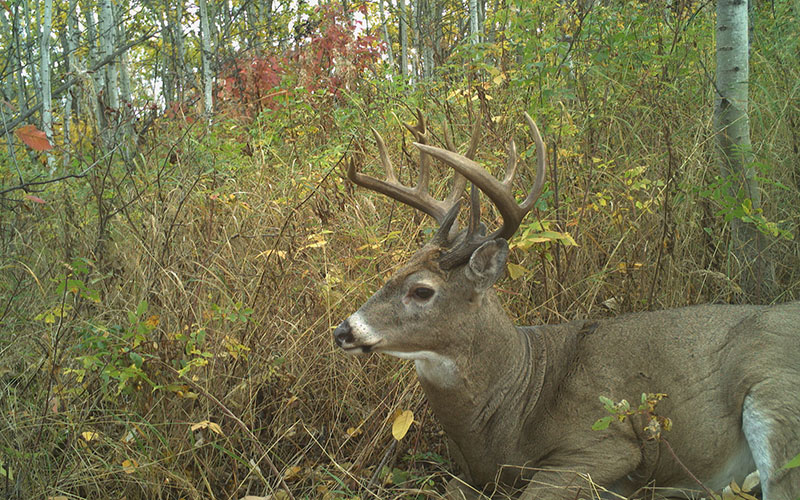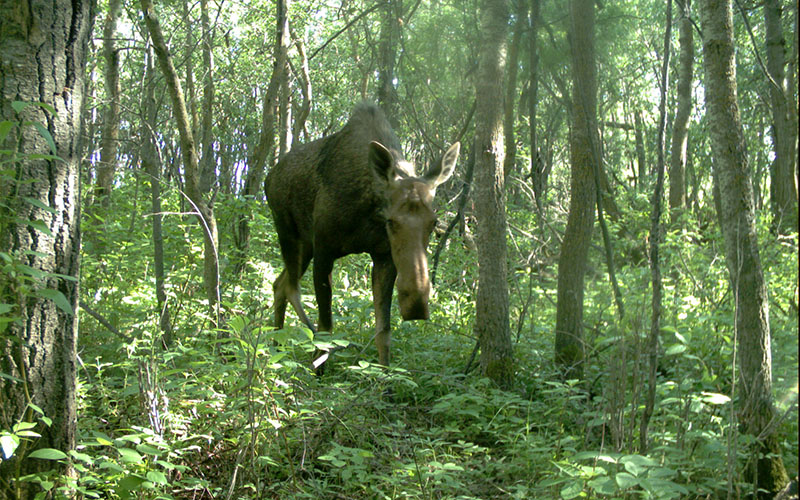
The City of Edmonton and the University of Alberta are collaborating on a project that uses remote cameras to monitor wildlife presence and abundance throughout Edmonton.
City of Edmonton and University of Alberta Wildlife Monitoring Project
Rationale and Purpose
Since 2018 the City of Edmonton and the University of Alberta have worked together to create WildEdmonton, a project that uses remote cameras to monitor wildlife presence and abundance throughout our city.
The WildEdmonton project is working to identify areas of valuable wildlife habitat so that future planning and development projects will know where animals live and how they move around. Identifying and protecting these areas will help protect animal habitats and ensure future generations of Edmontonians are able to experience and enjoy our parks and natural areas as the city grows.
Remote cameras are especially useful for monitoring the presence, location, and abundance of mammals of all sizes, ranging from squirrels to moose. It’s also helpful for cities to know more about where interactions between humans and wildlife are likely to occur so we can take steps to reduce the impact on both.
Habitat loss, fragmentation, and human disturbances threaten wildlife populations and biodiversity on a global scale. Many species need large wilderness areas, but urban areas can also support wildlife populations.
Protecting biodiversity in urban areas can be a challenge because of human development and activity. That can be done by making sure we protect natural areas and maintain natural connections that help wildlife move around Edmonton and the surrounding area.
The City of Edmonton works to protect its remaining natural areas as a connected ecological network, to conserve biodiversity and the life that exists in these areas.
Objectives:
- Monitor wildlife species in the river valley, ravines, tableland parks, and find areas where development has made a natural area too narrow.
- Identify why some wildlife stays in Edmonton by modelling habitat use and relative abundance.
- Collect data on wildlife use in Edmonton’s natural areas and semi-natural parks in collaboration with the Urban Wildlife Information Network (UWIN), for which Edmonton was the first Canadian city among a growing group of over 30 other cities in North America.
- Determine the frequency of use by mammals in recently-constructed, purpose-built wildlife passage structures.
- Share information with the public about biodiversity in Edmonton.
Progress to Date:
- We maintained remote cameras at 109 sites between May 2018 and August 2021.
- We collected over 2 million images to date
- While cameras were set up to avoid taking images of people, sometimes people stumbled upon the camera. In these cases, a program run by artificial intelligence was developed to automatically screen out images of people to protect their privacy
- Project staff and volunteers spent over 1000 hours analyzing and labelling images
- We found 28 mammal species and 41 bird species
- The project supported five University of Alberta graduate students and their research projects
Core Team Members
- City of Edmonton:
- Project coordination and Ecology Lead: Urban Growth and Open Space Unit
- AI and Machine Learning Lead: Data Science and Research Unit, Business Intelligence and Analytics
- Data and GIS support: Financial and Corporate Services, Service Innovation and Performance
- Field logistics support: (Former) Monitoring and Geospatial Services Unit
- University of Alberta:
Project Supporters
- Urban Wildlife Information Network, who collaborate with us on everything from monitoring protocols to peer-reviewed papers
- Alberta Biodiversity Monitoring Institute, who graciously provided training and loaned/donated the project wildlife cameras and other equipment at the project startup
- Alberta Conservation Association, who provided funding support for the project from April 2020 to March 2022


